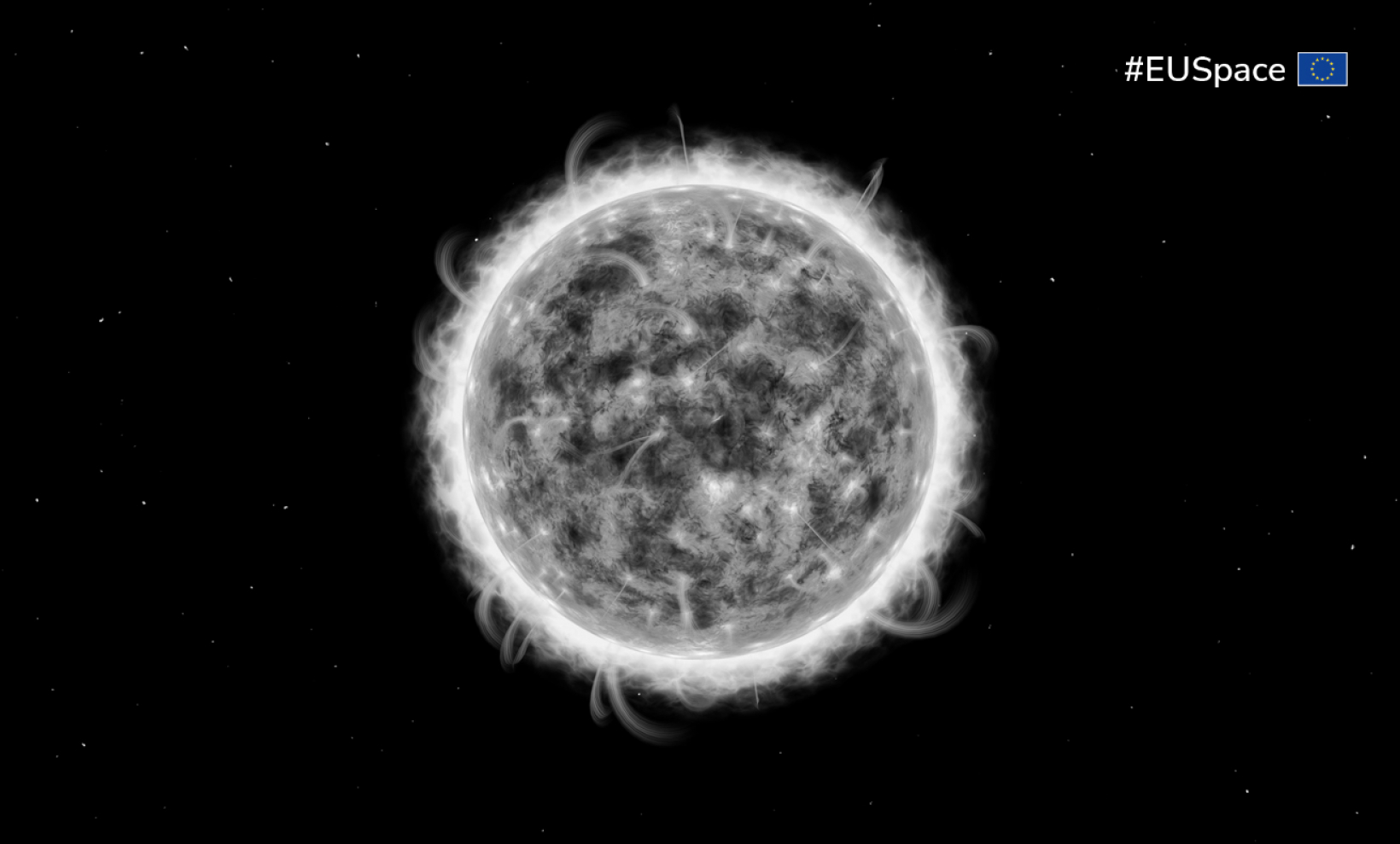
On 24 March a solar flare caused satellite anomalies and periods of GPS degradation. But, thanks to EGNOS, you probably didn’t even notice.
Have trouble telling your north from your south? You’re not alone. It turns out, the sun seems to get things mixed up too.
That’s because every 11 or so years, the sun’s magnetic field flips, causing its north and south poles to switch places. This process is called the solar cycle, and we’re currently in the early stages of Solar Cycle 25.
Solar cycles are marked by a significant increase of activity on the sun’s surface. Sometimes this activity can result in solar flares, which are large eruptions that blast energy and material into space.
When a flare reaches Earth, it can impact everything from radio communications to electricity grids. It can even cause issues with satellite signals, including the GNSS signals we use for location, positioning and timing services.
The good news is that there are services that can detect incoming solar flares. For example, on 23 March, the Space Weather Prediction Center, part of the US National Oceanic and Atmospheric Administration (NOAA), issued a severe geomagnetic storm alert about the detection of a strong solar flare.
When that solar flare hit on 24 March, it caused satellite anomalies and periods of GPS degradation.
However, thanks to EGNOS, most of us probably didn’t even notice.
EGNOS, Europe's regional satellite-based augmentation system (SBAS), helps improve the performance of GNSS systems like GPS and Galileo. It does this by using GNSS measurements taken by accurately located reference stations deployed across Europe. All measured GNSS errors are transferred to a central computing centre where differential corrections and integrity messages are calculated. These calculations are then broadcast over the covered area using geostationary satellites that serve as an augmentation, or overlay, to the original GNSS message.
As a result, EGNOS improves the accuracy and reliability of GNSS positioning information – even during such anomalies as a solar flare. In fact, during the 24 March solar flare event, EGNOS recorded good performance. EGNOS Safety-of-life Service performance dropped slightly in the far north of Finland and Norway, down to 98%. Users in the area were more likely to notice the aurora borealis lighting up the sky than any issue with their positioning information.
Just as Solar Cycle 25 continues to ramp up, so too does EGNOS. The latest system upgrade offers increased resilience against peak solar activity, amongst other advanced functionalities.
Media note: This feature can be republished without charge provided the European Union Agency for the Space Programme (EUSPA) is acknowledged as the source at the top or the bottom of the story. You must request permission before you use any of the photographs on the site. If you republish, we would be grateful if you could link back to the EUSPA website (http://www.euspa.europa.eu).

